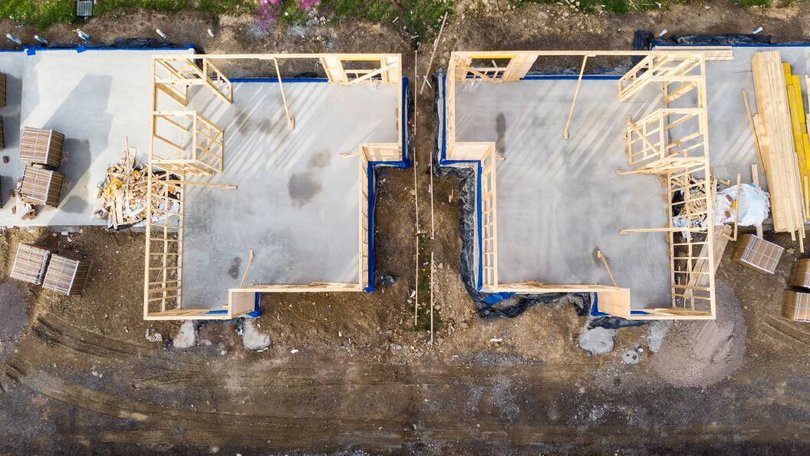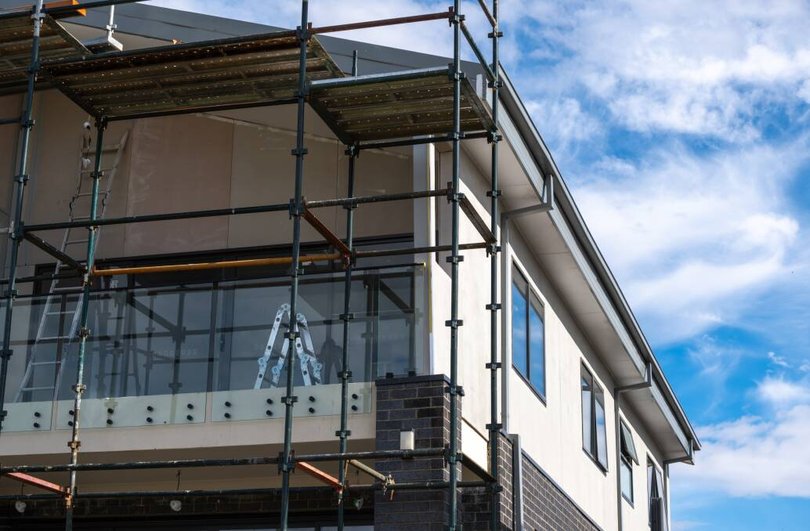Why the Australian family home is now taking 40 per cent longer to build than 15 years ago

Australia is seeing a surge in new housing starts, with the latest quarterly figures showing a welcome uptick in construction activity.
But behind the boost lies a growing concern. Homes are taking significantly longer to complete than they did 15 years ago.
Analysis of ABS data by the Master Builders Association shows the average build time for new detached houses has blown out by 40 per cent in recent years, from nine months in 2010 to nearly 12.9 months in 2024.
Sign up to The Nightly's newsletters.
Get the first look at the digital newspaper, curated daily stories and breaking headlines delivered to your inbox.
By continuing you agree to our Terms and Privacy Policy.While the latest ABS construction data activity shows an 11.8 per cent increase in dwelling commencements (47,675) over the March 25 quarter, dwelling completions were 4.4 per cent lower over the quarter (43,517).
Independent property researcher Cameron Kusher says increasing construction times for new builds will make it difficult to meet the government's national target of building 1.2 million new homes over five years.
"We're seeing more commencements, but homes are taking far longer to complete," says Mr Kusher.
"With current delivery speeds, it's hard to see how developers can consistently build 60,000 new dwellings every quarter," he said
"There are a few things contributing to this. One is a labour shortage that's leading to properties taking longer to be build, as well as things like poor productivity on site and scheduling issues and a shortage of materials.

"Another significant factor is that in some of the larger cities, such as Sydney and Melbourne, there is a focus on building higher-density housing, which takes a lot longer to complete than detached homes," he said.
In fact, the Master Builders Association's analysis of ABS construction data showed the completion times for building new apartments had blown out by 80 per cent in the past 15 years, from 18.5 months in 2010 to 33.3 months in 2024.
Mr Kusher says government and industry should be considering a raft of measures if it hopes to reach its lofty new building targets.
Experts believe tax reforms, an increase in prefabricated housing, greater use of AI and technology and adjustments to building approvals should all be reviewed if the targets are to be met and Australia's housing affordability issue addressed.
"I think we should be looking at absolutely everything," Mr Kusher says.
"We should be able to deliver homes quicker than we used to and we're not. Whether it's more prefab homes or greater use of AI, we should be looking at all these things. We need to consider everything," he said.
Red tape setback
Master Builders Association NSW's head of corporate affairs Ben Carter said reducing the regulatory burden on builders would also expediate new home completion times.
"A recent report by the Productivity Commission found that red tape is a key issue when it comes to meeting new housing targets, and the MBA concurs with that.
"We have been saying that for many, many years now that the time spend on managing and complying with the regulatory requirements at council level is one of the most significant impediments to building more houses," Mr Carter said
"You can't build more houses if the time it takes to meet regulations is getting increasingly longer. Our members are telling us they are spending more time than ever dealing with red tape, which means they are having to put more staff in their office and taking resources away from their building sites, which is also adding to building times," he said.
<img src="https://cue.wanews.com.au/webservice/thumbnail/article/19455827" id="_f351d40e-2310-47da-a2f3-1cafa1c42517" alt="Not Supplied" caption=""You can't build more houses if the time it takes to meet regulations is getting increasingly longer," says Master Builders Association NSW's head of corporate affairs Ben Carter. Pic: Shutterstock" credit="View">
What's the solution
Damien Crough, the co-founder of prefabAUS, the peak body group for Australia's offsite construction industry, believes prefabricated and modular homes have a key role to play in easing Australia's housing affordability issues and reaching the new home build targets.
"Prefabricated homes can be built significantly faster than a conventional home," he says.
"You are typically looking at 55 week according to the Master Builders Association data to build a conventional home in the suburbs compared to about 16 weeks for a prefab house," he explains.
Mr Crough believes an announcement by the Commonwealth Bank earlier this year, that it will introduce policy changes to simplify financing and the home buying journey for prefabricated housing, will lead to a significant increase in new prefabricated homes.
"One of the major reasons prefab homes haven't had significant penetration in the residential property market has been due to our finance and regulatory system which has been built around traditional building," he said.
"We believe CBA's changes to their lending policies will boost penetration of prefab homes and help ease housing shortages," Mr Crough said.
He believes prefabricated homes are just part of the puzzle when it comes to increasing new build times.
"When you look at other industry sectors they are in their industry 4.0 eras but in construction, we're typically at about industry 2.0.
"There are a multitude of technologies from 3D printing and concrete printing and AI that needs to be leveraged if we are to increase productivity in the housing market," he said.
AI builders
Matt Perrott, the cofounder of construction software company BuildPass said just like any other industry, digital tools have a key role to play in improving productivity and completion times.
"Unfortunately, the result of our nationwide labour shortages and increased material costs, coupled with time-consuming approval and compliance obligations, has created a significant productivity slump," Mr Perrot said.
"But productivity driving AI-powered tools that streamline administrative, compliance, quality assurance and general project management is an easy lever construction professionals can pull to help tackle planning and delivery issues head-on," he says.
From centralised project management to real-time updates and automated compliance checks, Perrott says digital tools can eliminate many of the time-consuming bottlenecks that currently impact construction sites and extend new build times.
Originally published as Why the Australian family home is now taking 40 per cent longer to build than 15 years ago
